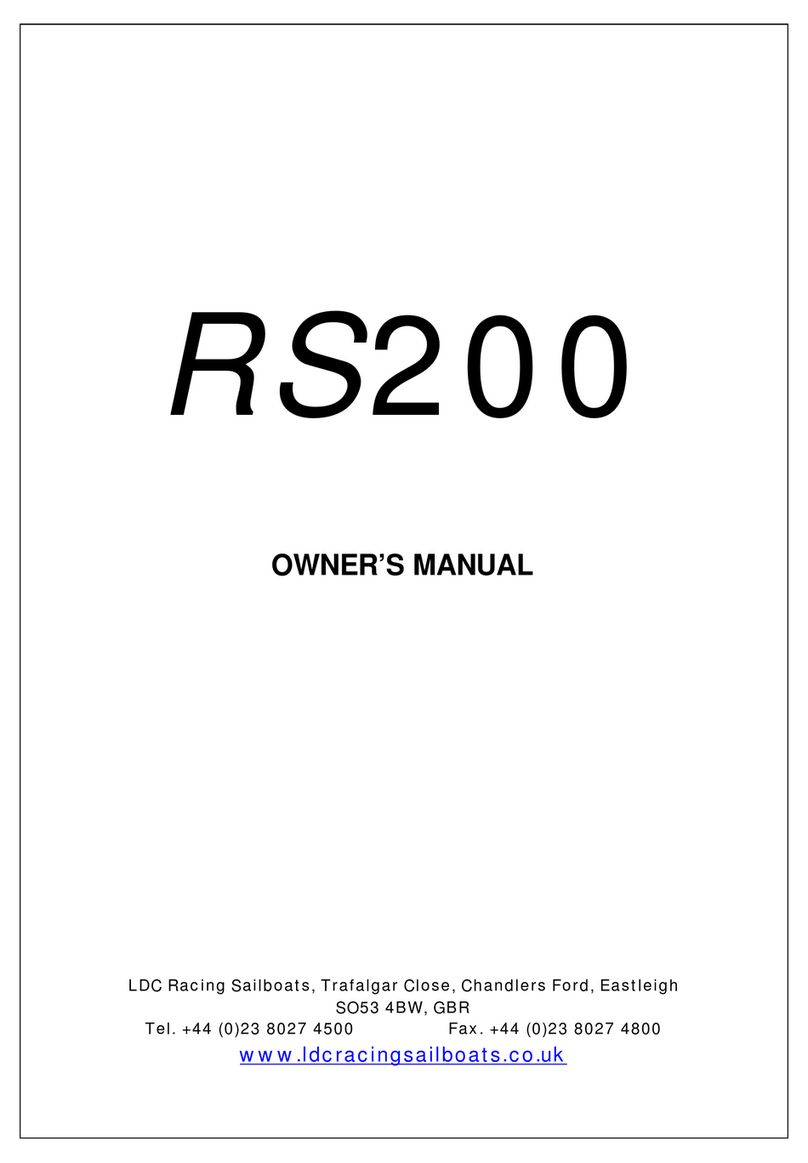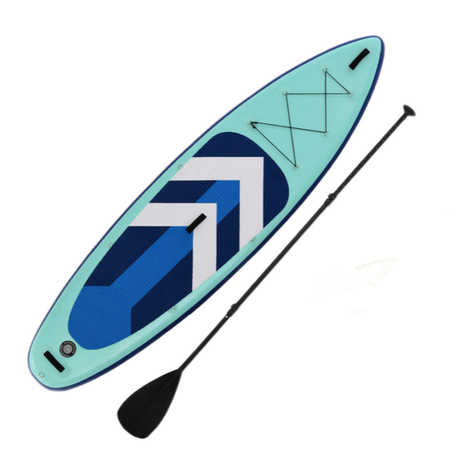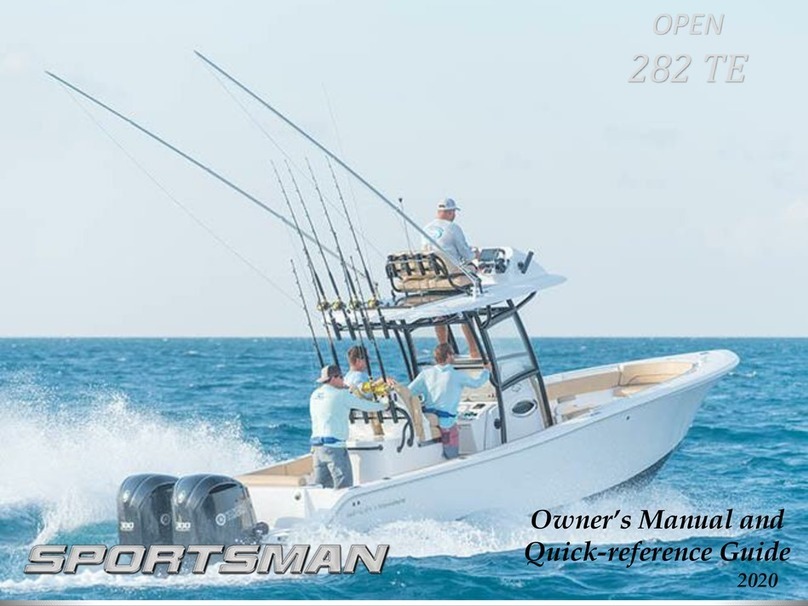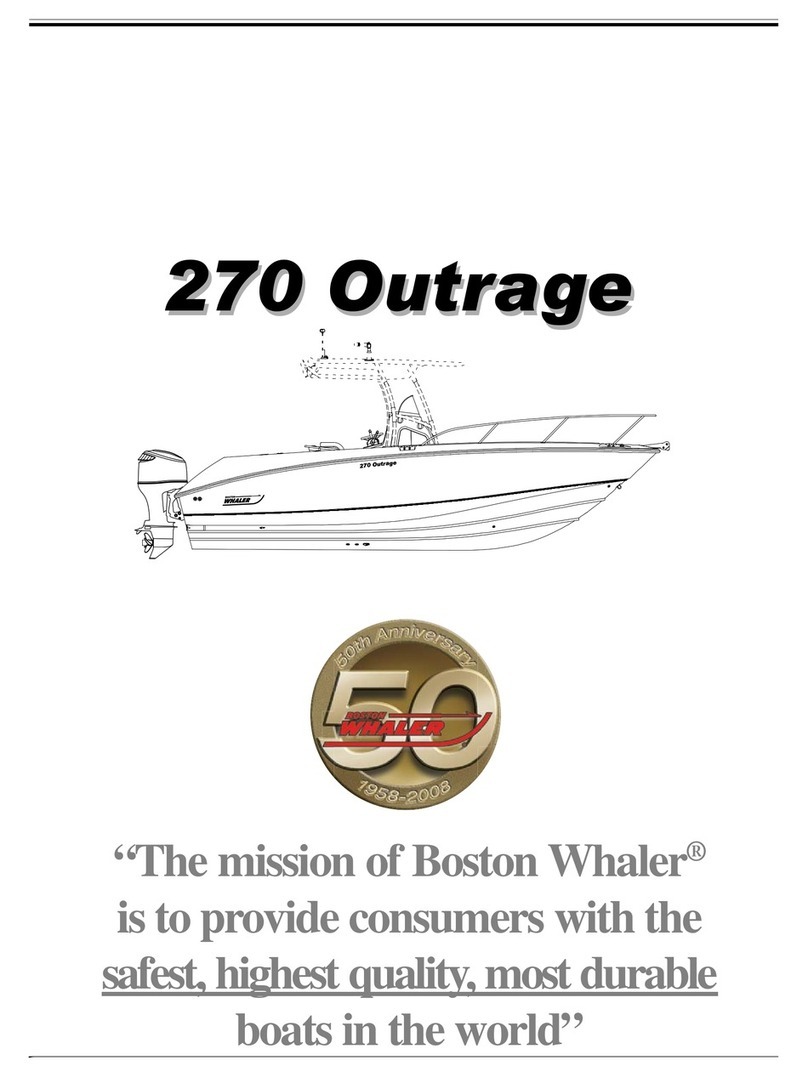LDC Racing Sailboats RS600 User manual

RS600
OWNER’S MANUAL
LDC Racing Sailboats, Trafalgar Close, Chandlers Ford, Eastleigh SO53 4BW, GBR
Tel. +44 (0)23 8027 4500 Fax. +44 (0)23 8027 4800

INTRODUCTION
Congratulations on the purchase of your new RS600 and thank you for
choosing an RS. We are confident that you will have many hours of great
sailing and racing in this truly excellent design.
Important Note
The RS600 is an exciting boat to sail and offers fantastic performance. It is a
light weight racing dinghy and should be treated with care. In order to get
the most enjoyment from your boat and maintain it in top condition,
please read this manual carefully.
Whilst your RS boat has been carefully prepared, it is important that new
owners should check that shackles, knots etc. are tight. This is especially
important when the boat is new, as travelling can loosen seemingly tight
fittings and knots. It is also important to regularly check such items prior to
sailing. Make sure that you have a basic tool kit with you the first time you rig
the boat in case there are tuning / settings changes that you wish to make.
Contents
RIGGING INSTRUCTIONS
TUNING AND SAILINGTIPS
CARE AND MAINTENANCE
CLASS ASSOCIATION
INSURANCE
For further information, spares and accessories, please contact:
LDC Racing Sailboats
Trafalgar Close
Chandlers Ford
Eastleigh
Hants SO53 4BW
Tel. +44 (0)23 8027 4500
Fax. +44 (0)23 8027 4800
Email. [email protected]

RIGGING INSTRUCTIONS
When you collect you RS600 it will already have been assembled ready to rig.
Prior to stepping the mast the diamond wires should be adjusted to suit your
individual weight. Broadly speaking the lighter you are, the lower the tension,
however there should always be enough tension to keep the wires located on
the end of the spreader. The wires should then be taped or whipped to the
end of the spreader and the bottle screw taped to prevent loss of tension.
It is worth attaching a metre or so of line to the trolley handle to help secure
the boat when rigging and launching on a breezy day, especially when the
rudder is mounted on the transom making the RS600 even lighter in the bow.
Stepping the mast
1). Lay the mast on the ground next to the boat, luff track up and hounds
approximately level with the mast step. Separate the rigging and attach the
forstay and should on the far side, ensuring that the trapeze wire whilst
draped across the boat will not catch the gunwhale as you raise the mast.
The middle of the chainplates will give a good average mast rake setting.
2). Check that the forestay purchase has a stopper knot in the end and is
fully eased, and that the mast cup is secured in the base of the mast with
tape.
3). Grip the near-side shroud and trapeze wire to the mast, lean the mast
forward and away from you slightly and lift it on to the mast step.
Now attach the near-side shroud and apply some rig tension on the
forestay(firm two handed effort on the 2:1 purchase is all that is required
giving approximately 250lb on the shrouds). Ensure that you secure the tail
of the forestay tensioning rope with two half hitches so that it cannot
accidentally release.
4). Attach the trapeze rings to the shock cord and check the adjusting
ropes have knots in the end. An additional stopper knot 100mm from the end
is helpful, leavingsomething to get hold of when lowered right down.
Rigging the boom
5). The boom should now be attached to the mast with the gooseneck
bolt. Take care not to cross the threads. Hand tighten the bolt from both
sides.
6). The mainsheet blocks should be hung from the eyes on top of the
boom with the strops fastened with stopper knots either side of the eyes.
The kicking strap can be attached to either eye, but it is more efficient on the
rear one and should not be fastened until the sail is hoisted, so as to achieve

maximum travel. The kicker strop should ideally be readjusted when reefed
as the boom is higher in this mode.
Rigging the mainsail
7). Shackle the clew of the sail to the block on the bar on the afte end of
the boom. Thread the outhaul through the clew cringle and hook it into the
notch on the end of the boom.
8). Check the battens are tensioned and tied in. Most people tension the
battens enough to remove wrinkles and never readjust them again, however
less tension in light winds will make it easier to “pop” them through a tack or
gybe.
9). Tie the main halyard to the top of the sail. Insert the first few inches
of the bolt rope into the luff track on the mast and hoist the sail.
All modern fully battened sails can be tricky to hoist, especially alone,so these
hints may help:
•Keep the boat absolutely head wind.
•Ease the rig tension as the associated compression tends to exaggerate
the slight reverse bend imposed by the diamond wires.
•Spray the bolt rope with a teflon lubricant regularly.
•Ensure the gap between the sail feeder and the mast is minimal –it must
very cleanly feed the bolt rope into the track. It may distort with use and
can be narrowed with a hammer applied gently to either side –or
widened be levering apart with a screwdriver.
•Maintain the top and bottom of the bolt rope regularly. Keep the edges
hot knifed or burnt to ensure easy entry and exit through the sail feeder.
•If at any time the sail becomes really difficult to hoist, one can work the
sail up about 200mm at a time, pushing it up with a hand either side of
the sail luff, then taking up the slack with the halyard.
10). Once the sail is up and cleated, coil up the halyardand tuck it under a
loop of elastic tied around the wing bar.
11). Insert the tack slider into the lower luff track and pull it down.
12). Ease the cunningham line right out(and kicker if already attached) and
tie a slip knot inboard of the cleat to stop the control line elastic pulling back
the slack. Pass the cunningham line through the tack cringle and pull down
very hard before making fast with a knot in the cut-out in the boom jaw.
Tension substantially to induce pre bend, and create a smooth sail entry.
13). The forward end of the outhaul line emerges from the underside of the
boom. Tie it to the block on the outhaul control line in the boat.

Final preparation and launch
14). Tie a knot in the mainsheet which restrains the boom just as it touches
the shroud(or before if it is windy). Tie the tail of the mainsheet to the elastic
which is tied to one of the mainsheet strop fixing eyes.
15). Locate the rudder in the transom gudgeon and pintle and make sure
the retaining clip holds it in place.
16). Attach the daggerboard elastic to the rope handle. This should be
tight enough to act as a friction device, but allow just enough slack to get the
board in and out of the box.
When it is extremely windy, it helps to fully tension the cunningham and
kicker to completely flatten the sail prior to launching as a full sail, flogging
from side to side, can cause the RS600 to rock alarmingly on its trolley. Ease
the kicker after launching to provide a more forgiving start to your sal.
17). Launch the boat and hold it firmly by the front of the wing, wedging
the shroud against your shoulder and out the daggerboard in the case. The
lightweights have an advantage hear as they can stand inside the wide wings.
18). Jump in and get the rudder down as soon as possible by easing the
wing nut on the stock and pulling on the downhaul below the tiller. When the
rudder is fully down, cleat the rope and tighten the wing nut for a firm fit
between the blade and stock.
19). Push the daggerboard fully down and away you go!
Reefing
Making the right decision about whether to reef or not can really help to
maximise the day’s sail and be the difference between winning and loosing
the race. The top sailors in the class expect to reef 15-20 knots and upwards,
but some light sailors will be faster and safer reefed above 12 knots of wind.
There is a rule –find your own limits(which will increase with experience) and
remember the macho guy who opts for the full rig may be slower over the
water, not just more prone to capsizing.
1). With the mast down, remove the mast extension and replace the heel
plug back in the mast. Attach the upper shroud eyes to the chainplates such
that the lower portion of the shroud is inboard and can stow down between
the wing bar and bulkhead.
2). Attach the trapeze handles to the upper trapeze wire eyes and fold the
extension pieces upwards and tape them out the way. Tension the forestay
purchase right down and secure the tail up the forestay with a clove hitch.
3). The boom can now be attached to the new goosenesck hole.

4). The sail should be lying with the upper zip portion showing so that as
the sail is rolled the lower zip comes round to meet it. Roll the sail as tightly
as is practical and zip up the sail from the leech to luff.
5). Attach the new clew ring to the boom and thread the outhaul.
You will be amazed at how manageable the RS600 becomes when reefed.
Tacking gybing and righting from a capsize become very easy as you push
yourself and the boats to new limits in the strongest of winds.
TUNING AND SAILING TIPS
Batten tension
Broadly speaking, the windier it is the tighter the battens should be. Unless
you race very keenly, enough tension to remove wrinkles will suffice for most
conditions.
Cunningham
Increasing the cunningham tension progressively bends the mast, flattens the
sail and opens the leech. In lighter airs pull it on hard, ease it slightly to
power up in marginal trapezeing to full power conditions and then pull harder
again as you become overpowered. Extreme tension shuld blade the upper
leech out flat when really struggling.
Kicker
The more wind there is, the more kicker you need. It powers up the leech
helping pointing upwind and maintaining power on the reaches. In very
gusty conditions easing it will make the rig more forgiving. Ease it
substantially when running down wind.
Diamonds
The diamond wires largely stiffen the mast sideways, but do also add some
fore and aft support. Tighter the diamonds, the more powerful the rig. They
will stretch, so check them from time to time.
Daggerboard
The RS600 daggerboard is small enough to leave fully down most of the time.
When it is really windy raise the board approximately 200mm and leave it.
The experts may raise it a little more on the board reaches and runs.
Mainsheet
The 4:1 mainsheet is essential upwind when really puuling on the tension to
produce very effective pointing. Playing the sheet in the gusts provides very
fast response from the light hull and is the key to getting the most from the
boat. The jammer is deliberately set low to enable easy sheet adjustment

upwind, whereas the rachet should help you keep the mainsheet uncleated on
the reaches.
Trapezing
A good general height for the trapeze ring allows it to slip easily on your
harness hook when sitting on the middle of the wing. It can be useful to
mark the adjusting rope at this point. The lowerset setting should just allow
you to sit on the aft sidedeck when hooked on( for those wild broad reaches
and runs).
The simplest way to master the RS600 is to forget the trapeze until sitting on
the wing and in control. Practice holding the mainsheet in your tiller hand so
that your forward hand is free to hook on to the trapeze or adjust the
controls. Most people find it easiest to hold the extension across the body to
facilitate this. The kick block helps you to move your feet out on the
gunwhale, which can be a very useful halfway point for offwind or marginal
trapezing. From there it is a comfortable step out to the wing.
Tacking
The RS600 is one of the most demanding boats to tack quikly and well.
Adhere to these golden rules:
1). Whatever the wind strength ensure the boat is upright as you start the
tack. On breezy days leeward heel will kill your speed immediately and either
the bow will be blown back onto the original tack or the boat will stop in
“irons”.
2). Ease at least 200mm of mainsheet before attempting to tack. When it
is very windy it helps to ease 500mm or more of sheet.
3). As you cross the boat, uncleat the sheet, pivot the jammer to the new
windward side, ease more sheet to allow you time to hook on to the trapeze
and get settled before sheeting in again.
Generally you should aim totack “from wing to wing”, using the associated
leverage to help maintain speed before the tack and accelerate away
afterwards.
In “Irons”
This is when the boat gets stuck head to wind during a tack and stops. It is a
common singlehanded dinghy problem. Under steering through a tack in any
conditions can leave the boat in irons. The lighter the hull and bigger the sail,
the greater the problem can be because the boat has less momentum and the
windage of the rig stops it more quickly. If you follow these guidelines, the
RS600 will be less difficult than many boats to get sailing again:
1). The wind flow over the fully battened sail will dictate which way the
boat will go. Steering in reverse will not always work. Once the bow swings,
commit yourself to that tack, even if it is not your preferred direction.
2). Let the mainsheet out to the knot, sit back and out, allowing the bow
to raise and continue blowing away from head to wind. Induce windward

heel. The boat will now pivot around the submerged transom and rudder as
opposed to the daggerbaord.
3). Maintain or increase windward heel, even dip the wing in the water if it
is very windy, sheet in and lean out more to accelerate and regain steerage.
Ok, you loose 20-30 seconds, but so long as you are patient and positive you
will get going again at the first attempt.
Gybing
The RS600 is quick enough downwind to mean gybing is relatively easy, so
long as you remember to steer back into the gybe as the boom comes across.
If you round onto a board reach, when the pop across it will usually result in
a swim. But, if you find an RS600 tricky, try gybing an Enterprise in a breeze!
Righting the boat after capsize
Most RS600 sailors become very accomplished at this! Remember to ease the
kicker and mainsheet. Gripping the gunwhale rather than the wings for
leverage. Righting lines fastened to the control line take-away eyes on the
inside of the wing bar, and joined together with shock cord similarly to the
control lines, are very useful and can really minimise your time loss during a
race.
The wider wings allow light sailors to climb back into the boat between the
wing and the gunwhale.

CARE AND MAINTENANCE
Hull
The hull laminate is foam sandwich, which is stiff and very light. Foam
sandwich is, however, liable to dent if subjected to point loading. Store the
boat on an approved RS600 trolley when ashore and take particular care not
to drag your trapeze hook over the hull when recovering from a capsize.
Keep your dinghy drained and well ventilated
The RS600 is made using epoxy resin, so is less prone to water absorption
than a polyester hull. Nevertheless, is advisable to take care because the gel
coat is polyester and water absorption could cause blistering and a raise fibre
pattern. Obviously in dealing with a marine environment equipment gets wet
which in itself is not a problem. The problem starts when moisture is trapped
for any length of time. The key, therefore, is to store the boat properly
ashore.
a). Ensure the boat is kept at an angle to allow water to drain away.
b). Use a breathable polycotton, acrylic or cotton duck cover.
c). If leaving an under cover on the boat, ensure tat the transom is open
for drainage and that there is a hole below the daggerboard slot to allow
water to drain.
Wash with fresh water
Fresh water evaporates far more quickly than salt water, so if your dinghy has
been sailed in salt water wash it off thoroughly. The fittings will also work
better if regularly washed.
Damage
Hull damage falls into three categories:
a). SERIOUS e.g. large hle, split crack or worse. Don’t be too distressed!
Get the remnants back to your RS dealer –most problems can be repaired by
an RS expert.
b). MEDIUM e.g. small hole or split, gel crazing. If this occurs during an
event sailing can often be continued as long as leaking can be prevented by
drying the area and applying a strong adhesive tape. CAUTION –if the
damage is close to a heavily loaded point then a close examination should be
made to ensure joints and the laminate are fit for the prevailing conditions.
Get the damage properly repaired as soon as possible.
c). SMALL e.g. chips, scratching. This type of damage is obviously not life
threatening but needs to be attended to, firstly to keep the boat looking good
and secondly to prevent water ingress into the laminate. This type of
damage can be repaired by the owner, using the correct RS gel coat.
Tying down
Tying down your RS600 to its trailer is important because to much or too little
tension could result in damage. Only use an RS approved trolley. The boat is

well located on its trolley, so you only need apply sufficient tension to hold
the boat in contact with the supports.
Tie the boat down at the bow and across the middle of the boat in the region
of the trailer wheels. Pad the deck where the straps touch.
Foils
The foils are GRP with a foam core. Look after them as you do the hull.
Wash with fresh water regularly. Repair any chips as soon as possible. If
you intend to travel a lot with the boat, then RS padded foils bags will be a
worthwhile investment.
Spars
The mast is a carbon composite structure and is in two parts which sleeve
together. Separate the two parts regularly and wash with fresh water. Apply
a thin layer of vaseline to the sleeve. Check the sheave at the mast head for
wear.
The mast is finished with a coat of two pack polyurethane varnish. This
protects the laminate against UV degradation in sunlight. It is advisable to
apply a new coat of varnish once a year. Lightly sand the mast to help the
new varnish bond to the old.
The boom is aluminium alloy. Wash regularly and check the fastenings of all
fittings are secure. Remove the boom from the mast when leaving the boat
in a dinghy park, to prevent electrolytic action between the carbon of the
mast and the boom jaws. Leave the gooseneck bolt in the boom, not the
mast.
Sail
The sail should be rolled and stored dry, out of direct sunlight.
When using a new sail for the first time, try to avoid extreme conditions
because high loads on new sailcloth can diminish the racing life of the sail.
If your sail is stained in any way, try to remove it using normal detergent and
warm water. Do not attempt to launder the sail yourself.
Repairs should be temporarily made using sticky number cloth or sail repair
tape and then returned to the sailmaker for a professional repair. Watch out
for wear and tear especially around batten pockets and bolt rope.

RS CLASS ASSOCIATION
www.rs-association.com
The RS Class Association is highly active and you really should join.
The RS Racing Circuits are the envy of the dinghy world, with great competition
and a fantastic and friendly social life. The RS Association also organises Training
Events throughout the year. Social highlights such as the RS Ball are not to be
missed!
The Class Association produces regular, informative Newsletters, and a Yearbook.
There is also an extremely comprehensive RS Association web site, part of which is
only accessible to RS members.
In addition, the Association maintains the Class Rules, which are the “fabric” of any
one design class. Without these the Class would disintegrate and values would
tumble.
The Association relies on the support of the owners of the boats to financially
survive. Membership costs only £33.00 per year (£15 for Youth membership) and
without it, you won’t even know what you are missing!
You should have received a membership application form with your new boat, but if
not, please contact the RS Class Membership Secretary Jill Line on 01275 872466,
jill@the-j-team.fsnet.co.uk, or see under ‘Documents’ on the website.
Members receive a voucher towards the cost of boat insurance with Noble Marine
Insurance.
Any other queries about the Association should be directed to the RS Association
Administrator, Heather Chipperfield, on 01590 610273, heatherc@rs-
association.com.
INSURANCE
The Class Association has organised an insurance scheme with M A Noble
Insurance Brokers. They are highly efficient to deal with and always fair
when it comes to making a claim.
Contact Noble Insurance on:
Tel. 01636 707606
Fax. 01636 707632
Table of contents
Other LDC Racing Sailboats Boat manuals
Popular Boat manuals by other brands

Sportsman
Sportsman Tournament 214 owner's manual

Sevylor
Sevylor Caravelle KK55 owner's manual

Boston Whaler
Boston Whaler 37 Justice Series Operation & maintenance manual

MIVARDI
MIVARDI M-BOAT 320 AWB user guide

Gumotex
Gumotex SEAWAVE user manual
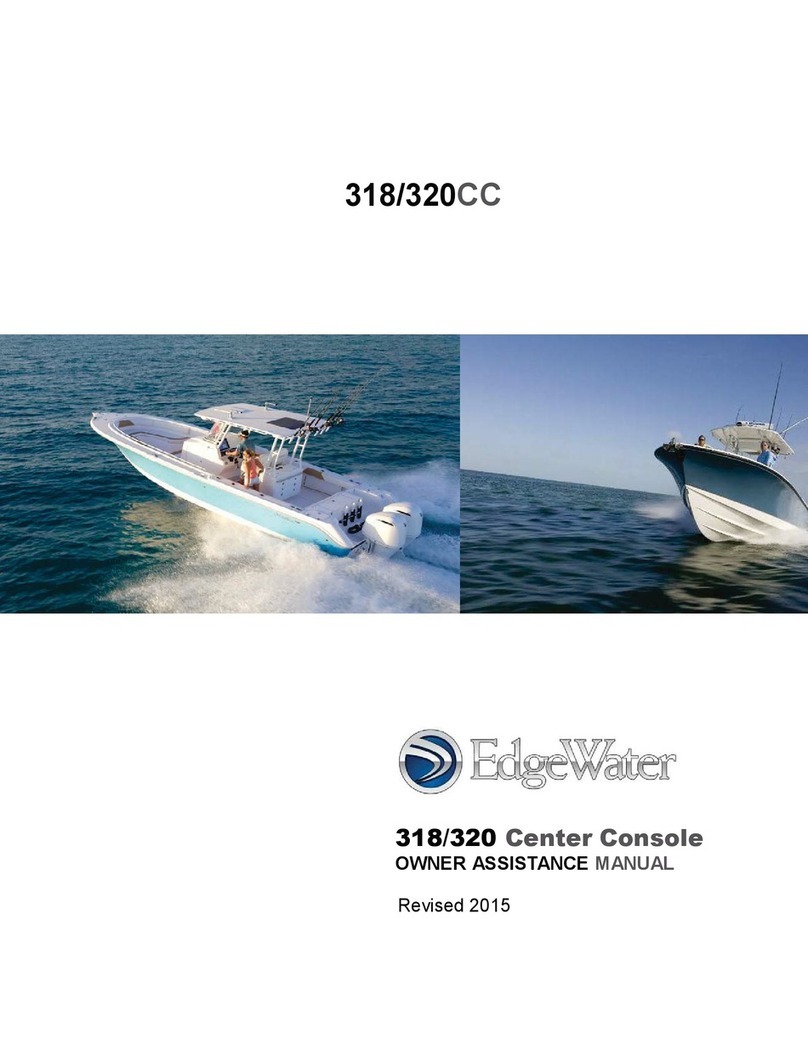
Edgewater Networks
Edgewater Networks 318CC OWNER ASSISTANCE MANUAL
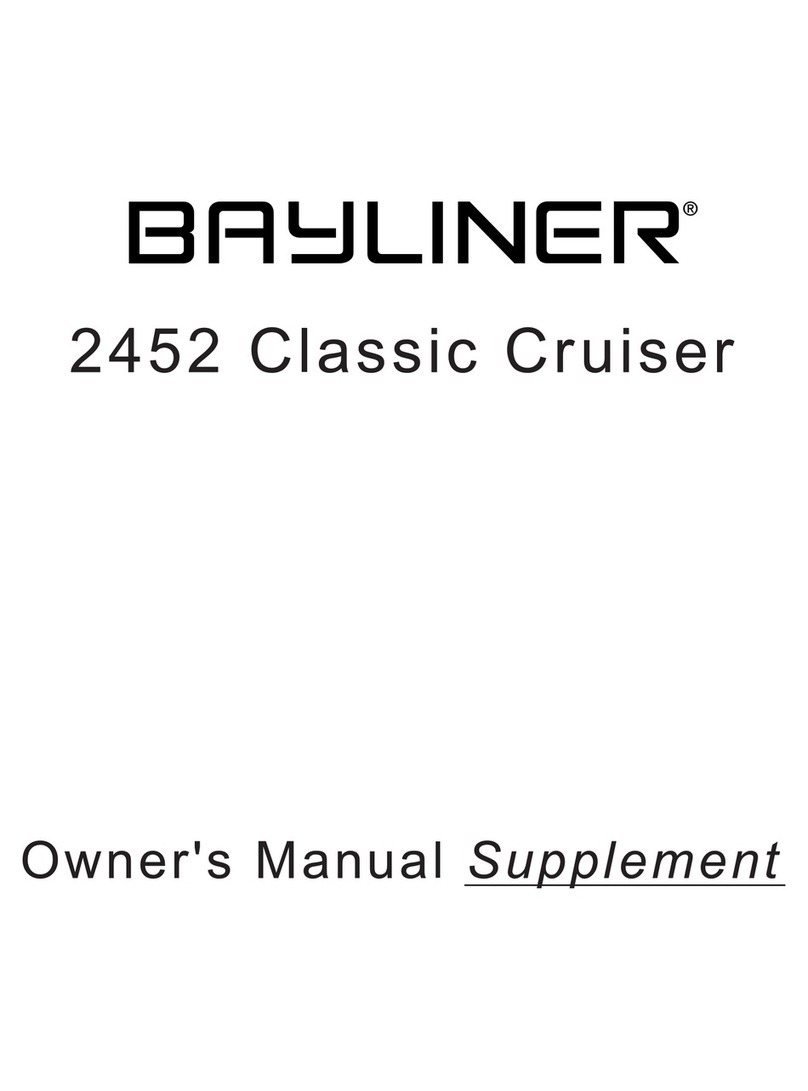
Bayliner
Bayliner 2452 Classic Cruiser owner's manual

NorthStar
NorthStar 230 CDS manual
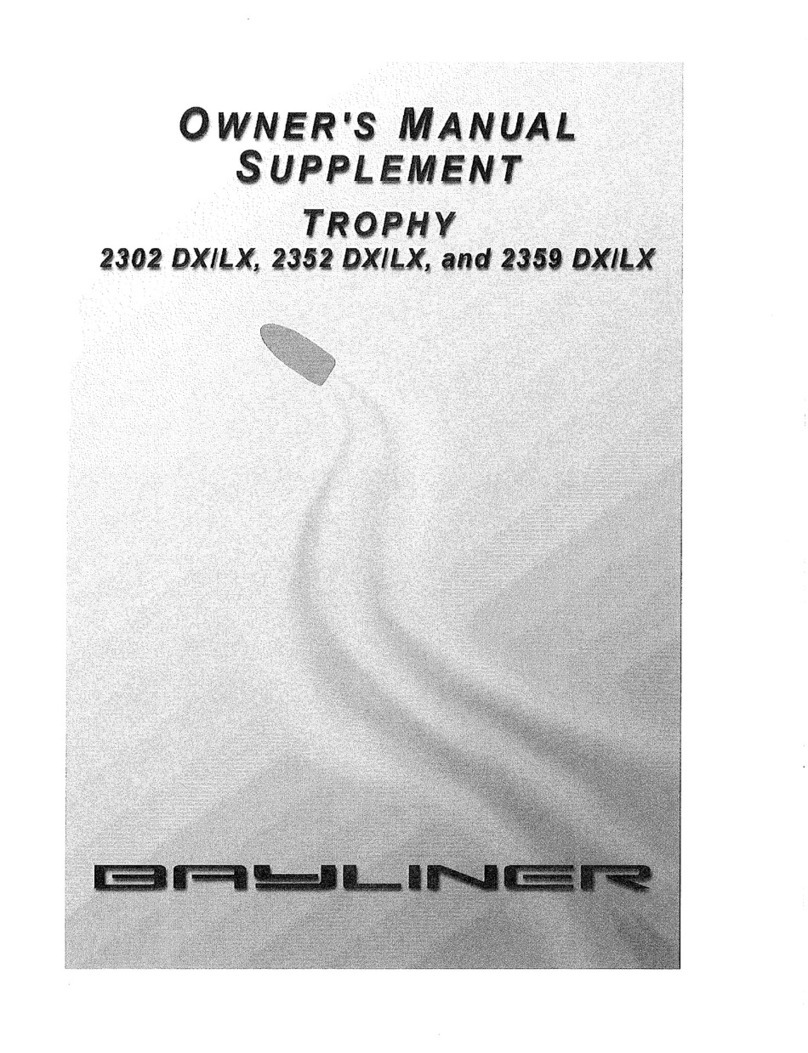
Bayliner
Bayliner 2302 DXILX Owner's manual supplement

Volvo Penta
Volvo Penta D4 Operator's manual

Maverick Boat Company
Maverick Boat Company Pathfinder 2300 HPS owner's manual
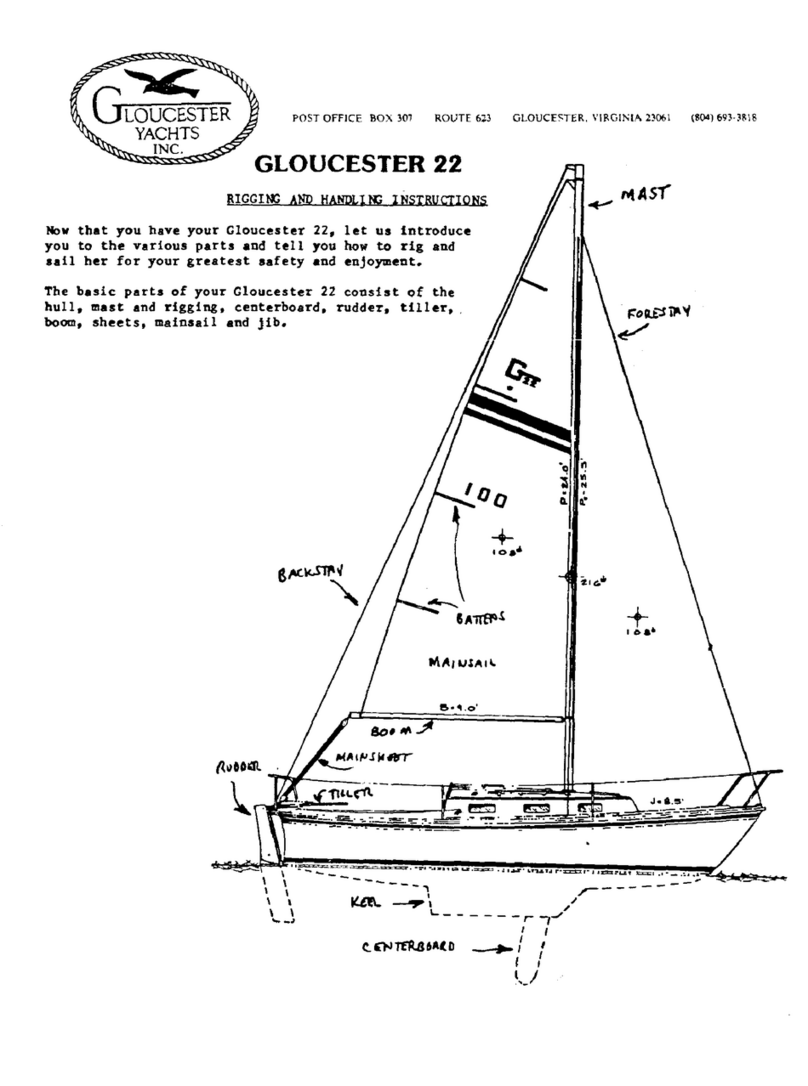
Gloucester Yachts
Gloucester Yachts Gloucester 22 Rigging guide
